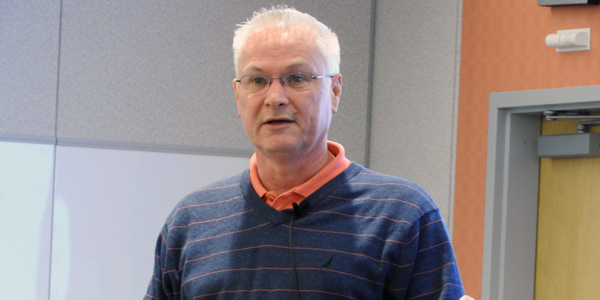VALLEY FORGE, Pa. — PJM’s Asanga Perera presented stakeholders at last week’s Planning Committee meeting with a problem statement and issue charge to address issues the RTO sees with its current process for evaluating market efficiency projects.
“We have conducted two cycles to date since FERC Order 1000 was established, and during these two cycles, we recognized various challenges that we think are important to address going forward,” he said.
One of the issues, Perera explained, is that PJM’s benefit-to-cost calculations beyond 10 years are extrapolations, not more accurate simulations.
“We have discovered, in certain instances, we may end up either overstating benefits or understanding benefits, especially on a longer horizon,” he said.
PJM also must address modeling issues, timing of the proposal-window process, interregional analysis and project re-evaluation, Perera said.
Sharon Segner of LS Power applauded the focus on the process but asked if it could go further.
“This is a great discussion in terms of some of the challenges that the market efficiency window is facing,” Segner said. “Is there anything missing?”
PJM staff resisted suggestions to include a review of cost calculations, saying that’s being handled elsewhere.
Segner also warned against making any retroactive changes.
“It’s important to not undermine the work of the past, because that’s going to create a lot of regulatory uncertainty,” she said.
If the initiative is approved, the work would be assigned to a task force, Perera said.
Light-Load Analysis

PJM has compiled some data to begin updating parameters for modeling light-load conditions. PJM’s Mark Sims presented the data.
“There’s definitely plenty of activity happening out there to draw some conclusions,” he said.
One focus is comparing high-voltage alarms with instances when high-voltage emergency procedures were taken. The alarms, which require generators receiving them to take action, precede emergency procedures that PJM takes.
“The alarm data is a good proxy to use moving forward to look for statistical values to develop parameters” for a test, Sims said.
PJM is also considering how to address the lag between recognizing an issue and compiling all the information to address it effectively.
“Between it happening and us fixing it, it could be a couple of years,” Sims said.
Summer Demand less than Expected

Mild weather meant load never came close to reaching the peak summer forecast, PJM’s John Reynolds said.
The summer peak of 145,331 MW on July 19 was 5% below the forecasted peak of 152,999 MW and 4.4% below the 2016 peak of 151,945 MW. “The champ still reigns,” Reynolds said, referring to PJM’s all-time peak of 166,876 MW on Aug. 2, 2006.
There were 0.4 MW of load management July 19, he said, and there have been anecdotal accounts of a “significant amount” of peak shaving this summer.
The decline in weather-normalized load won’t mean an immediate drop in load forecasts.
“That would be an assumption that people should not make,” Reynolds said. “It will take time for that to work its way in full.”
The call for patience confounded Calpine’s David “Scarp” Scarpignato.
“I don’t want to wait 18 years to get the forecast right,” he said.
ARR Analysis IDs Constraints
An analysis of Stage 1A 10-year auction revenue rights found “infeasible facilities” both within PJM’s footprint and in market-to-market interactions with MISO, Perera said.
The internal constraint will be addressed by a project (b2774) in the Regional Transmission Expansion Plan, which is expected to be in service in 2020. Of the remaining nine M2M constraints, one will be addressed by a MISO Transmission Expansion Plan project that is expected to be in service this year. Three others have projects under consideration, two will be included in a future targeted market efficiency project proposal window and three are pseudo-tie flowgates.
Asked specifically about lines connecting to the Ohio Valley Electric Corp. — which is attempting to join PJM as a transmission zone — Perera said no new issues were identified. A project between OVEC’s Clifty Creek Power Plant and the Trimble County substation is one of nine M2M constraints under consideration.
— Rory D. Sweeney



